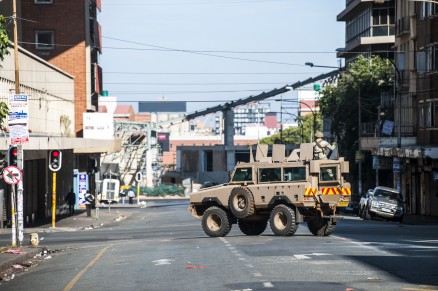
Day: 20 Recorded cases: 1170 Total deaths: 0
As lockdown progresses, so has my perception of time. I find myself constantly questioning what day of the week it is. However, the flash of a news notification on my phone signals a new day: ‘235 new cases of COVID-19 in SA’. The headline triggers a mental calculation: ‘If South Africa had 935 cases yesterday, that means today we have 1170.’ We are constantly updated with daily statistics and discoveries regarding the spread of the virus. Statistics have even become geographical markers. Regions are demarcated on maps according to their number of positive cases and deaths. Thus, despite the city dwellers’ retreat away from the physical space of the city, the overstimulation present in city life remains with us. Georg Simmel is known to be both a global and marginal thinker who pays attention to overlooked everyday phenomena. For him, the metropolitan experience is characterised by ‘rapidly shifting stimulations of the nerves’ and because of the persistence of the stimulations, humans eventually become immune to these sensations (Simmel 329). Simmel calls this form of indifference the ‘blasé metropolitan attitude’ (329). I suggest that it is possible to explore the blasé attitude outside of the metropolitan context. Therefore, I pose the question of whether, through our immediate access to the steady flow of information during the national lockdown, the blasé attitude has infiltrated our private spaces.
As the number of recorded cases in South Africa continues rising and the death toll starts nearing the double digits, I find that my obsessive calculations and refreshing of news pages lessen in frequency. Rather than a reaction of disbelief to the new statistics, I border on apathy. This estrangement from experience is an area of focus for the theorist, Walter Benjamin. He notes that the ‘value of information’ can only survive in the ‘moment in which it was new’ (90). As evident in the appearance of local news channels specifically dedicated to the COVID-19 crisis, the temporal relevance of information is key. This necessity is crucial during a time in which citizens depend on the latest reports to know how to proceed safely. For example, South Africans rely on President Ramaphosa’s regular announcements regarding the lockdown status. Benjamin maintains that ‘information’ has emerged as a new ‘form of communication’ because of the middle class’s use of the press as an ‘instrument’ (88). Furthermore, he explains that the temporary nature of information stands in contrast to that of a story which ‘does not expend itself’ (Benjamin 90).
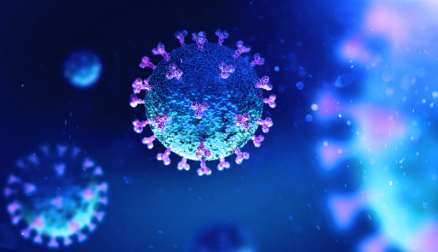
Day: 27 Recorded cases: 1505 Total deaths: 7
Benjamin believes that the story ‘preserves and concentrates its strength and is capable of releasing it even after a long time’ (90). Living in self-isolation has led many people to turn to various forms of entertainment that depict pandemics. This is noticed in the abundance of articles with titles such as: ‘Coronavirus: What can we learn from a Hollywood pandemic?’, ‘The plague writers who predicted today’ and ‘The 20 Best Pandemic Books to Read during Coronavirus’. It is asserted that the ‘story’ is distinct from the novel because the ‘reader of a novel…is isolated’ (Benjamin 100). In the context of social distancing, it is through the isolating act of reading that a person can escape the reality of self-isolation. Not only does this offer a mode of escapism, but our continued consumption of entertainment contributes to the home as a sphere of capitalist consumer culture. I link this to my arguing that our experience of the city is not contained within the city space. In Achille Mbembe’s article discussing post-apartheid Johannesburg, he notes that the ‘city of consumption’ is conscious of the role of ‘the arts’ as a form of ‘commercial entertainment’ (402). Thus, our homes do not guarantee freedom from the capitalist commodification of culture. Through streaming services such as Netflix and Audible, homes are just as saturated by consumption as the city.
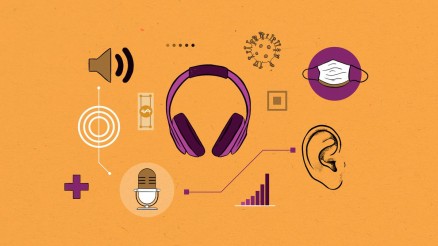
Day: 36 Recorded cases: 2173 Total deaths: 25
Theodor Adorno’s work reveals a concern with consumer-culture. He proposes that ‘people prepare themselves’ for certain terrors by ‘familiarising themselves with gigantic images’ (115). Therefore, I argue that by turning to stories, humans attempt to desensitise themselves to the dystopic quality of the new reality. I see constant reminders that the world will not return to its previous state because this is the ‘new normal’. In order to grow accustomed to this reality, we have had to shift the ways that we interact with the city. Many of these changes are characterised by a heightened sense of caution when in public. Zygmunt Bauman writes about the figure of the stranger in the English city. He states that ‘one person’s home ground is another person’s hostile environment’ (130). Lockdown has caused the city’s population to perceive anything outside of their home as a ‘hostile environment’. I have become vigilant of any space outside of my ‘home ground’ as it has the potential to be a carrier of the virus. Thus, the ‘inside’ offers a sense of security that the ‘outside’ cannot guarantee.
The walls that ‘encircle and shield’ houses construct an observable spatial ‘duality of inside and outside’ (Mbembe 385). This duality is emphasised during the national lockdown while also providing a false sense of security. The physical seclusion created by walls appears to function as a form of protection from the perils that communal places in the city now hold. The walls mean that only those belonging to the household are allowed into that space and thus it forms a safe distance from the uncertainty in the city. I propose that this is a misleading sense of comfort because of the unpredictable encounters we have with strangers outside of the home. There is a connection between Mbembe’s establishment of spatial duality and Bauman’s notion of an ideal ‘defensible space’ which has ‘effectively guarded borders’ (135). Bauman indicates that the ‘inhabitants of that outside turn into carriers of threat’ and thus need to be ‘kept away’ so that the home can remain a space with no ‘incalculable risks’ (135). The antagonising of the stranger is intensified during the pandemic because their unfamiliarity poses a much greater threat to our wellbeing. For this reason, through actions such as hand sanitising, we make a conscious effort to cleanse ourselves of engagements with city strangers. However, strangers are not the only embodiment of the virus. It may be living on the objects we bring into our homes and in the air through which we move. Therefore, the reason that walls are perceived as guards against the virus is because they prevent the intrusion of strangers. However, this belief is suspended when it is acknowledged that strangers are not the only carriers that can infiltrate our homes.
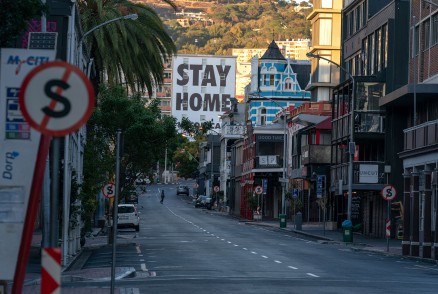
Day: 42 Recorded cases: 3034 Total deaths: 52
My father brings the strange into our home every day when he returns from work. He brings home traces of his encounters with patients, nurses, and other staff members. Essential workers in hospitals, pharmacies, and grocery stores are strangers we cannot avoid. The creation of the ‘essential workers’ category means that some citizens are excused from certain lockdown rules. Yet, I question the value of these freedoms in the context of a viral pandemic in which the limitations placed upon us are for the protection of our wellbeing. It becomes important to discuss how a nation perceives the lives of essential workers. Karl Marx’s notion of the worker as a commodity is useful in my exploration of the worker’s role during the national lockdown. Marx posits that workers are treated as cheap commodities through which valuable material objects are produced (2).
Although Facebook is saturated with posts showing gratitude for essential workers, this does not change the fact that the lives of these workers are put at risk in their fulfilling the obligation to work. It is this obligation that I link to Marx’s examination of the relationship between the labourer, the product, and the means of production. Marx explains that the process of labour is ‘external to the worker’ and thus the worker is alienated from both the product and the act of production (4). It is as a result of this estrangement that the worker ‘falls under the domination’ of the capital they produce (Marx 2). Concerning the role of the South African essential worker, I propose that it is an instance of ‘forced labour’ because it is a ‘mere means to satisfy needs outside itself’ (Marx 4). Marx concludes that labour and the product thereof belong to a person, other than the worker, who gains pleasure from the product (8). This is amplified in the context of the COVID-19 pandemic because essential workers provide services and commodities to those who can still afford to sustain themselves during this time of financial instability. Moreover, the workers labelled ‘essential’ are often the lowest paid class of workers. This suggests that there exists a population of people who the state regards as necessary yet expendable.
Essential workers are expected to expose themselves to the possibility of contracting COVID-19 in order to provide for those who are living in strict lockdown conditions. This can be connected to Marx’s idea that labourers experience a ‘loss of reality’ (2) by working in the service of more powerful people (8). I make this argument because the reality of essential workers is distinct from that of the majority of the population who remain guarded in their homes. Because this ‘loss of reality’ is, in a sense, a matter of life or death, I tie this to Michel Foucault’s theorising about a form of power he calls ‘biopolitics’. Relating Foucault’s biopower to Marx’s writing on labour is supported by their common theme of ‘man-as-species’ (Foucault 243) or ‘species-life of man’ (Marx 7). Foucault claims that power is exerted through the regulation of humans as a population rather than as individual bodies (243). An example of this is evident in ‘power’s hold over the right to preserve life and administer death’ (Mbembe 392). I propose that essential workers provide evidence of the state’s command of ‘making live and letting die’ (Foucault 247). These workers are often people of colour who live in lower socioeconomic classes and this may indicate the demographic of labourers that the state is ‘letting die’ by ‘increasing the risk of death’ (Foucault 256) through exposure to coronavirus. The idea of the state viewing certain human lives as disposable appears in Mbembe’s discussion on the notion of ‘superfluity’ when he states that there is an ‘indispensability and expendability of both labour and life, people and things’ (374).
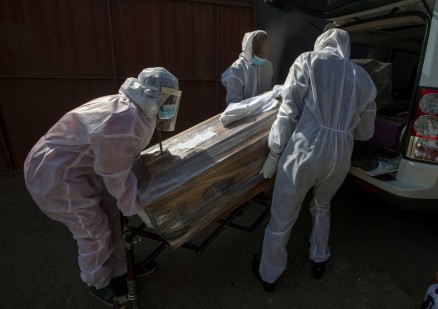
Day: 48 Recorded cases: 4220 Total deaths: 79
Marx’s work is said to ‘trace’ the value of material objects back to the ‘human labour whose appropriation produces capital’ (Stallybrass 284). This appropriation of human life is apparent in Marx’s characterisation of labour as the ‘objectification of the species-life of man’ (7). Not only has the pandemic exposed the exploitation of particular classes of workers, but it has also revealed the extent to which capitalism has permeated our lives. Despite our physical distance from commercial centres in the city, online shopping and delivery services have provided the means through which we can still actively engage in commercial activities from home. The doorbell rings. I give my mother a questioning look and she gives me a similar look in return. Hearing the doorbell ring during a time in which wandering the streets is prohibited has proven to be quite unsettling. It turns out to be a delivery for house number 56. We are 58. This mix-up has occurred maybe four times this week. We wonder what ‘essential’ items our neighbours could possibly be needing so regularly.
For Marx, the ‘objective world’ is a ‘result of human practice’ and can thus be altered accordingly (Eagleton 132). Furthermore, Marx posits that humans can only confirm their reality by engaging with the ‘material world’ (Eagleton 135). With this in mind, I aim to explore how our understanding of what makes a commodity a necessity has shifted because of the new reality we face. ‘Panic-buying’ is a phenomenon that emerged upon the first case of COVID-19 in South Africa. Suddenly, the South African population decided that their homes could never have enough toilet paper, cake flour, or salt. Panic-buying can be interpreted through Marx’s understanding that conscious life is determined by interactions with ‘material surroundings’ (Eagleton 135). Because of our intensified anxiety about the rapidly changing world, we are likely dependent on material objects for a sense of solidity in our new living conditions. The accumulation of commodities may guarantee a way in which to cope with the ‘rupture’ between the then and now (Mbembe 404). Capitalism thus remains the consistent structure upon which we can rely in times of radical transformation.
A necessity for a family in a higher social class might be considered a luxury for someone in the working class. Marx’s domestic life was defined by calculations to determine the value of a ‘pleasure or luxury’ in relation to ‘the sacrifice of another pleasure or even necessity’ (Stallybrass 192). On a similar topic, Simmel notes that poverty is relational because ‘each social class has typical needs’ and the ‘impossibility of satisfying them means poverty’ (172). Therefore, each social class has a different point at which ‘wealth or poverty begins’ (Simmel 173). It is significant to consider this in the context of the pandemic because it becomes evident that products form the foundation for various lifestyles. This is described in Mbembe’s stating that ‘luxury, pleasure, consumption, and other stimuli’ are crucial factors in the ‘process of subject formation’ (374) as well as the ‘production of lifestyles’ (400). Therefore, despite the concerning state of the national and global economies, a subject’s position in the social order is maintained through their perception of what is considered vital for their lifestyle to be sustained in extreme circumstances.
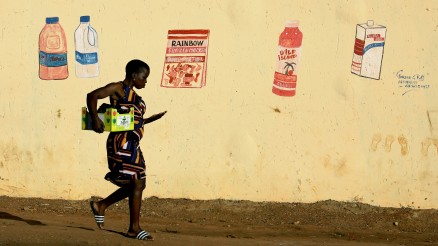
Day: 53 Recorded cases: 5350 Total deaths: 103
In Simmel’s writing on the subject of the poor, he indicates that social structures are based on ‘extreme manifestations of social differentiation’ and it is through assisting the poor that social order is affirmed (172). While those of us who could easily adapt to the demands of self-isolation settled into new habits to survive working from home, those living in South Africa without permanent housing were depending on the government’s aid. In light of Simmel’s argument, the government’s actions to ensure the wellbeing of the poor and homeless further contribute to the preservation of the social hierarchy. This is not to say that the government’s assistance is not vital but it is a useful example to illustrate the way that certain people are cast into specific social classifications. The ‘sociological category’ of ‘the poor’ is not determined by ‘specific deficiencies and deprivations’ but it is rather a result of ‘those who receive assistance or should receive it according to social norms’ (Simmel 176). Our current social norms are characterised by social distancing as well as physical hygiene precautions. And because these regulations were established for the wellbeing of the South African population as a whole, those who cannot satisfy these expectations are regarded as somewhat separate from the totality.
Prior to the first day of lockdown, South African news reports drew attention to the government’s solutions for helping people living in poverty. Educational workshops were offered and accommodation was arranged. The media coverage of these initiatives furthers the creation of a particular image of ‘the poor’ as a social category. As a group of people, ‘the poor’ are not ‘united by interaction among its members’ but rather through society’s mutual attitude towards them (Simmel 176-177). I argue that the portrayal of the poor in the media makes the public aware of their receiving assistance and thus establishes the people who should be called ‘poor’. The labelling of particular people as ‘poor’ is a separation that positions those people in a ‘very specific relationship with the whole’ (Simmel 172). This relationship is defined as being ‘materially outside the group’ (Simmel 158) yet functioning as an ‘object’ within the group (Simmel 170). Simmel defines this as a ‘particular form of being inside’ (170).
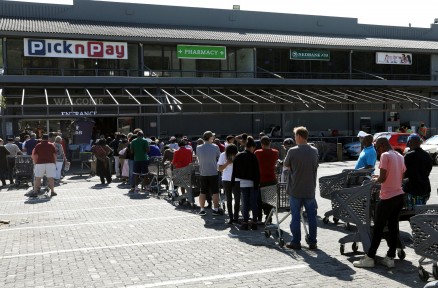
Day: 56 Recorded cases: 6336 Total deaths: 123
A person plays the ‘specific social role’ of ‘being poor’ only when the population reacts towards the person with assistance (Simmel 176). This reasoning is also applicable to the ‘concept of personality’ which is determined by the way in which ‘the totality’ acts towards a person (Simmel 176). One’s personality is not ‘defined by an inner characteristic’ but rather depends on external reactions (Simmel 176). Therefore, it is noteworthy to discuss the effects of self-isolation on our understanding of personhood. Ultimately, I aim to explore the question of who we become without the city and without those who contribute to the formation of our personalities. The classroom is not the only social environment that has had to relocate to virtual spaces. Instant messaging and video call services such as WhatsApp and Facebook offer platforms on which we can stay in communication. However, as opposed to merely complementing our face-to-face interactions as in the days before lockdown, these social media platforms are now replacements. Our current reliance on remote communication may mean that we exhibit a different version of our personality that is distinct from the persona realised in material social reality.
The limitation on our social activities may prove to limit the construction of our personalities. Lockdown is a unique event in which there is an attempt to entirely regulate the movements and behaviour of a population. Mbembe states that ‘the potential for freedom’ is founded ‘as much on the sensory flow of urban experience as on the contingency and unpredictability of everyday life’ (390). On this basis, our separation from the urban space removes the probability of encountering moments of randomness and thus threatens our sense of freedom. In fact, it can be said that the purpose of lockdown is to transform urban places into predictable spaces because the lack of spontaneity offers the reassurance of personal safety. Foucault’s notion of the ‘norm’ can also be used in this context because the norm can be applied to ‘a population one wishes to regularise’ (253). For example, a new norm is found in maintaining a certain distance between bodies.
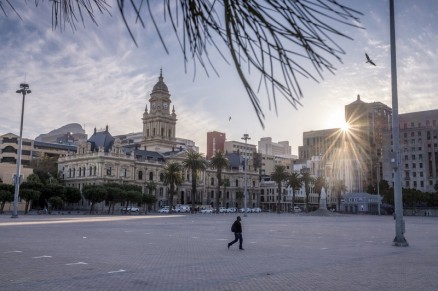
Day: 61 Recorded cases: 8323 Total deaths: 138
Our detachment from the city has not only impacted our personal lives, but the city has also changed in character because of our absence. The city is described as consisting of ‘wide networks and complex, long-distance interchanges and transactions’ whose ‘flow and motion’ contribute to the city’s capitalist structure (Mbembe 376-377). The continued ‘circulation of commodities’ during lockdown illustrates how necessary the mode of capitalism is for the survival of the state. Although delivery services make capitalist transactions possible, the city still lacks people and their interactions. Mbembe indicates that the ‘material life of cities is made up of people and things’ (377). Therefore, I argue that despite the endurance of material exchanges, the nature of the city has fundamentally altered because of our disappearance. The city is an incoherent space that represents ‘different layers of historical time superimposed on one another’ (Mbembe 404). I believe that we have all become aware of the fact that we are witnessing a historical moment as well as a period of transition. The city becomes a physical manifestation of this transition as we reminisce on the meanings that buildings, streets, and images held prior to the pandemic. Humans are constituents of the city’s infrastructure and because we are no longer there, we can expect the city to change in both appearance and quality. In the words of Mbembe: ‘our sense of urban totality has been fractured’ (404).
In Minima Moralia, Adorno states that only in the ‘nooks and crannies of the cities’ can nature be found (116). This implies that humans have created an environment in which nature cannot survive despite our attempts at preservation. Foucault notes that we do not live in a ‘natural environment’ because our spaces have been ‘created by the population and therefore has effects on that population’ (245). Furthermore, he states that this is an ‘urban problem’ (Foucault 245). While we do have reason to grieve the loss of the era before this pandemic, these points made by Adorno and Foucault offer an additional perspective. We, as humans, are responsible for the spaces we have created. It seems we have created urban environments that allow this virus to flourish. And perhaps the very nature we have fought against has found a new way to gain power over our species. Vacant city spaces around the world have been flaunting new wildlife inhabitants who seem to be reclaiming their territories. And maybe the captions of these images are right in saying: ‘Nature is healing. We are the virus’.
 SLiPStellenbosch Literary Project
SLiPStellenbosch Literary Project 